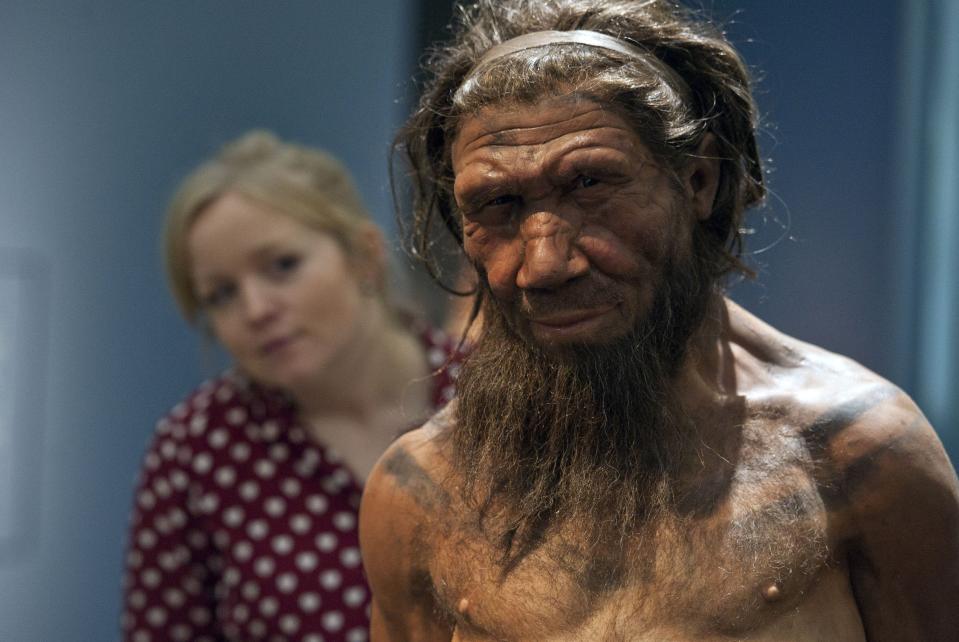Most of us have a bit of Neanderthal DNA, with some more than others. Scientists think they've figured out why.

About 2% of our genes are shared with Neanderthals.
But some populations have slightly more Neanderthal in them, and it has been puzzling scientists.
By looking at how human genomes' evolved, scientists hope to understand the history of Neanderthals' sexual conquests.
Most of us have a little bit of Neanderthal DNA.
Far from being the lumbering brutes that we once thought they were, a slew of recent studies suggest Neanderthals not only interacted with Homo sapiens, but also had children with them.
These sexual encounters mean Neanderthal genes have been passed down through the generations, and today most people can thank Neanderthals for about 2% of their genomes.

But that proportion varies, and some people have slightly more Neanderthal DNA than others. People in East Asia, notably, tend to have more Neanderthal DNA in their genomes, but why they have more has long baffled scientists.
That's because Neanderthals are thought to have mostly been European. Some Neanderthal remains were found as far East as the Altai Mountains of Siberia, but their bones are usually found in European countries.
The logical conclusion would be that the first children of Homo Sapiens and Neanderthals would have been born in Europe. The next logical step is that Neanderthal DNA would get more diluted as Homo sapiens mingled with other humans and hominins when they spread away from the area where Neanderthals lived.
"So what's puzzling is that an area where we've never found any Neanderthal remains, there's more Neanderthal DNA," study author Mathias Currat, a geneticist at the University of Geneva, told CNN.
A new study, published in the journal Science Advances Wednesday, may provide some answers.
Currat and his co-authors drew from a database of 4,000 human genomes extracted from human remains dating back up to 40,000 years ago, and held by the Harvard Medical School.
Their study found that up to about 20,000 years ago, European genomes were indeed richer in Neanderthal DNA than the Asian genomes they have on record.
But that proportion shifted about 5,000 to 10,000 years ago. What the scientists think happened then is that a group of farming Homo sapiens from Anatolia, now Western Turkey, started mixing with hunter-gatherers in Western Europe.
These farmers had a little less Neanderthal in them, so Western Europeans lost some of that ancestry as they mixed, Currat said, per CNN.
What's not quite clear, however, is what happened in Asia. That's in part because the database the scientists were looking at had a lot less information about Asian genomes.
"It turns out that archaeological excavations have been much more numerous in Europe, which greatly facilitates the study of the genomes of European populations,'' said study author Claudio Quilodrán, a geneticist at the UNIGE Faculty of Science, in a press release accompanying the findings.
Read the original article on Business Insider

 Yahoo Finance
Yahoo Finance 